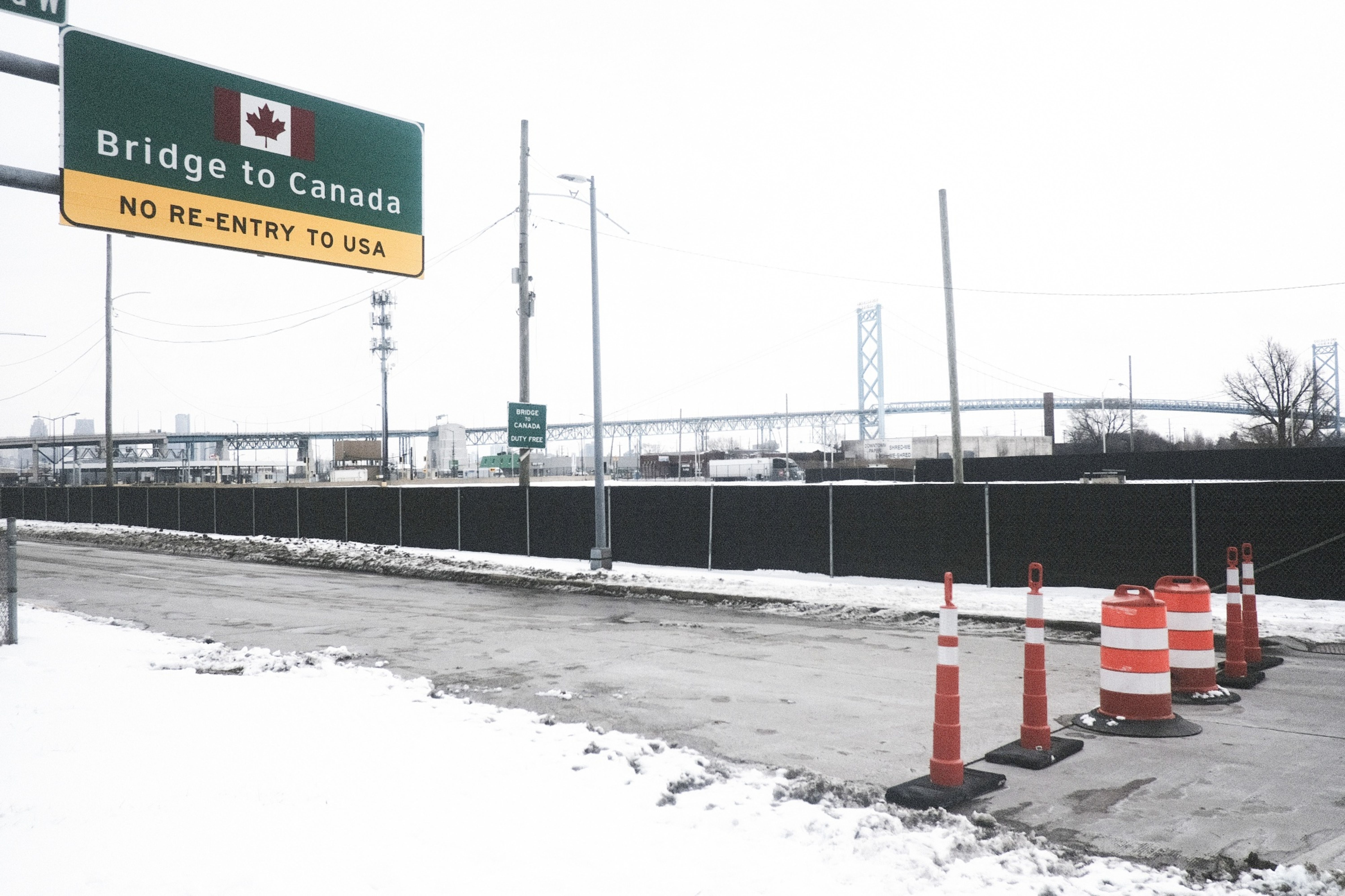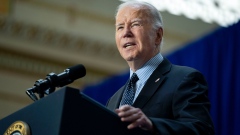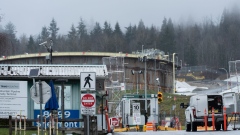Feb 8, 2022
How blocking one bridge shut down a quarter of Canada-U.S. trade
, Bloomberg News
Ambassador Bridge accounts for about 20% of trade between Canada and U.S.: Supply chain expert
It didn’t take many protesters to freeze a major North American economic artery. The brief closure of one bridge straddling the U.S. and Canada exposes the power of rolling blockades, a supply-chain vulnerability and the grip one crossing has over the region.
A cluster of anti-lockdown demonstrators on the Canadian side of the border blocked access Monday night to the Ambassador Bridge -- a crucial, privately-owned link between Detroit, Michigan and Windsor, Ontario.
Traffic was all but halted early Tuesday before appearing to slowly resume later in the afternoon. Police in Ontario said there was “limited access” to U.S.-bound traffic. A small number of trucks were seen heading in the Canada-bound direction, though the website of the Canadian border agency indicated the bridge was still closed.
There’s literally no bigger bridge for trade between the two neighbors. Built in 1929, the art-deco inspired structure carries on its slender steel build about a quarter of the total goods going back and forth between then the U.S. and Canada. The ties with Detroit’s car industry stretch decades. The bridge carries nearly as much trade as the U.S. does with all of the U.K.
If commerce is disrupted again, or for longer stretches, it could further hobble supply chains that have creaked under the weight of record shipping levels as consumers shift their purchasing power to material goods during the pandemic. The auto sector could see deliveries stymied, as they grapple with parts shortages

“A closure of the bridge would be catastrophic for the Canadian economy,” Brian Kingston, who heads the Canadian Vehicle Manufacturers’ Association, told said by phone Tuesday.
Even if temporary, the extraordinary shuttering marks the collision of a pair of sagas. Rolling protests of truckers, farmers and hangers-on that have taken aim at vaccine requirements, lockdown measures and Canadian Prime Minister Justin Trudeau. Then there is the years-long fight between Canada’s government and the combative Moroun family, which owns the bridge, over whether to build a second crossing.

In a statement, Matt Moroun, the chairman of the company that owns the bridge, said trade needs to resume and that the family sympathizes with “truck drivers and those caught up in this blockade.” It called on officials to “take prompt action to alleviate the situation as quickly as possible in a manner that reflects mutual respect.”
Major American figures including Elon Musk, Donald Trump Jr. and Florida Governor Ron DeSantis have ratcheted up their support for the protests.
The epicenter of the original demonstration is an eight-hours drive from the Ambassador Bridge in the Canadian capital city, Ottawa, where the downtown core has been besieged by a much larger contingent of truckers for over a week and police have been helpless to disperse them.
The bridge itself, when it was completed, was the longest suspension span in the world and was named as a tribute to the ties between the two countries. It was built by a company that was also among the constructors of the Golden Gate Bridge, opened eight years later. The Ambassador opened, however, weeks after the start of the financial crash that led to the Great Depression, triggering a lengthy saga of financial woes for the crossing.
The Moroun family, through their Detroit International Bridge Company, bought a controlling interest in the iconic bridge in 1979 and has controlled it since. The notoriously pugnacious, litigious and somewhat reclusive patriarch, Matty Moroun, died in 2020. The bridge carried US$130.7 billion in trade in the first 11 months of last year, according to an analysis of U.S. census bureau data by research firm WorldCity, resulting in a cash cow of toll fees.
The Ambassador is the only crossing between Detroit and Windsor that can accommodate all traffic, though a new bridge is under construction, conceived in part to ease the grip the Morouns have on the region.
The new bridge -- named for hockey icon Gordie Howe, a Canadian who starred for the Detroit Red Wings -- is being financed by Canada’s government. Work is proceeding despite objections by the Morouns, who had planned their own expansion.
There’s also a publicly-owned tunnel under the Detroit River but most transport trucks don’t fit in it.
The bridge’s closure was, easily, the most economically significant of the protests yet, though its brevity will curb the impact if traffic resumes flowing at a typical pace. What began as a protest against vaccine mandates for cross-border truckers has rapidly evolved into a much broader movement that has tapped into a deepening sense of malaise after a prolonged pandemic.
Trudeau addressed the crisis in parliament but has so far declined to meet the protesters. “Everyone’s tired of COVID, but these protests are not the way to get through it,” he said Monday night.
Protests have taken a disturbing turn, and have included Nazi and Confederate imagery, deafening around-the-clock blasts of air horns traumatizing residents, maskless protests that have forced the closure of a nearby mall and, at one point, the raiding of a soup kitchen.
There is also the danger that all this could flare up again. Demonstrations have closed other trade arteries across the U.S.-Canada border, including the Blue Water Bridge between Port Huron, Michigan, and Sarnia, Ontario, which has since reopened, and periodic closures at a crossing between Coutts, Alberta, and Sweet Grass, Montana.







